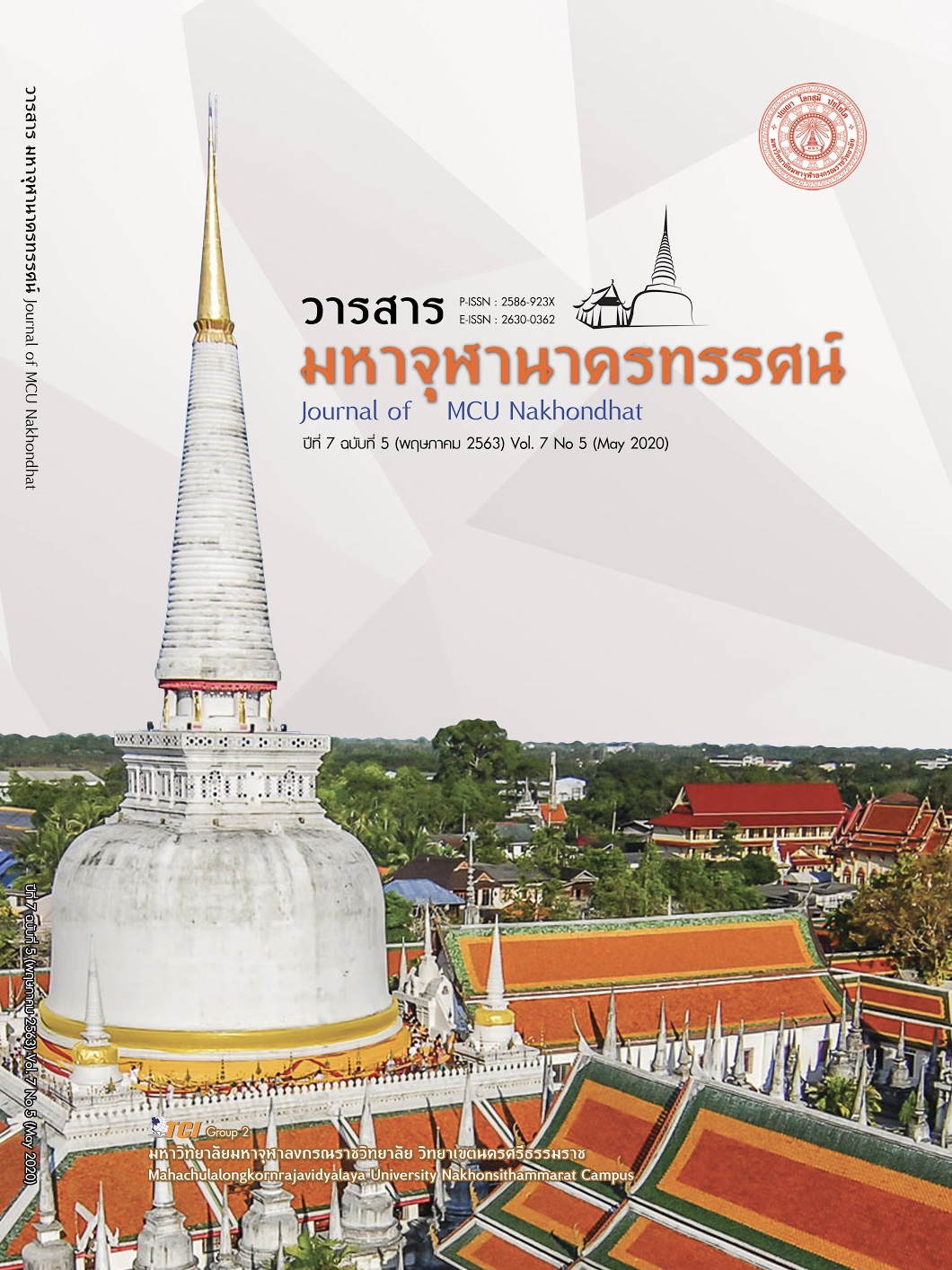THE ABBOTS’ ROLE IN THE TEMPLE ADMINISTRATION IN PRESENT THAI SOCIETY
Main Article Content
Abstract
The objectives of this article were: 1) to study the management measurement in the temple at the present Thai society, 2) to study principles of Sappãya in Theravãda Buddhism, 3) to application of Sappãya in management temple to administration Thai community. The objective is a qualitative used document research and in – depth interviews as research tool. The document research is important to study issues regarding the condition of temple management in Thai society and main Sappãya in Buddhism include th Abbot’s role problems of current measurement management and the temple management of Sappãya for framework are developing a questions set interviewing 6 involved people. Which the interviewing of the parties arises to used techniques Purposive Sampling Technique. By sampling the persons mentioned the study follows.
Study resulte founded: 1) The state of the temple management is a direct duty of an abbot who is in charge temple for maximum efficiency Especially in the presen Thai society which has changed dramatically. The abbot must applied the principles of management in dimensions appropriate for state of society. 2) Main of Sappãya in the Theravãda Buddhism have 2 parts Sappãya within definition to proper practiced forAchieve Dharma individual and Sappãya external to proper for collective life. 3) Findings revealed that an application of Sappãya for management measurement in the temple govering Thai society 3.1) Avasa – Sappãya has cleaned, shady, quietly,secure to look after all of area 3.2) Ãhãva – Sappãya have to sharing and eating easy food together and to get invited to suitable 3.3) Puggala – Sappãaya that abots has to ask questions and recommend useful to get rid of the person causing the problem and to be a good friends and 3.4) Dhamma – Sappãya the monastery was place of Dhamma practice should not forget the heart that creates Dhamma suitable for the monk and the people governing without rule.
Article Details
References
คูณ โทขันธ์. (2545). พุทธศาสนากับสังคมสังคมและวัฒนธรรมไทย. กรุงเทพมหานคร: สำนักพิมพ์โอเดียนสโตร์.
เฉียบ ไทยยิ่ง. (2539). ปัจจัยที่ส่งผลต่อความสำเร็จของเจ้าอาวาสในการพัฒนาวัดให้เป็นศูนย์กลางชุมชน: กรณีศึกษาภาคเหนือและภาคตะวันออกเฉียงเหนือ. กรุงเทพมหานคร: โรงพิมพ์การศาสนา.
ประเวศ วะสี. (2539). พระสงฆ์กับการรู้เท่าทันสังคม ในหลักการบริหารจัดการวัดในยุค โลกาภิวัตน์. กรุงเทพมหานคร: สำนักงานสภาสถาบันราชภัฏ.
พระศรีปริยัติโมลี (สมชัย กุสลจิตฺโต). (2543). การเมืองมิใช่เรื่องของสงฆ์. กรุงเทพมหานคร: เรือนแก้วการพิมพ์.
มหาจุฬาลงกรณราชวิทยาลัย. (2539). พระไตรปิฎกภาษาไทย ฉบับมหาจุฬาลงกรณราชวิทยาลัย. กรุงเทพมหานคร: โรงพิมพ์มหาจุฬาลงกรณราชวิทยาลัย.


